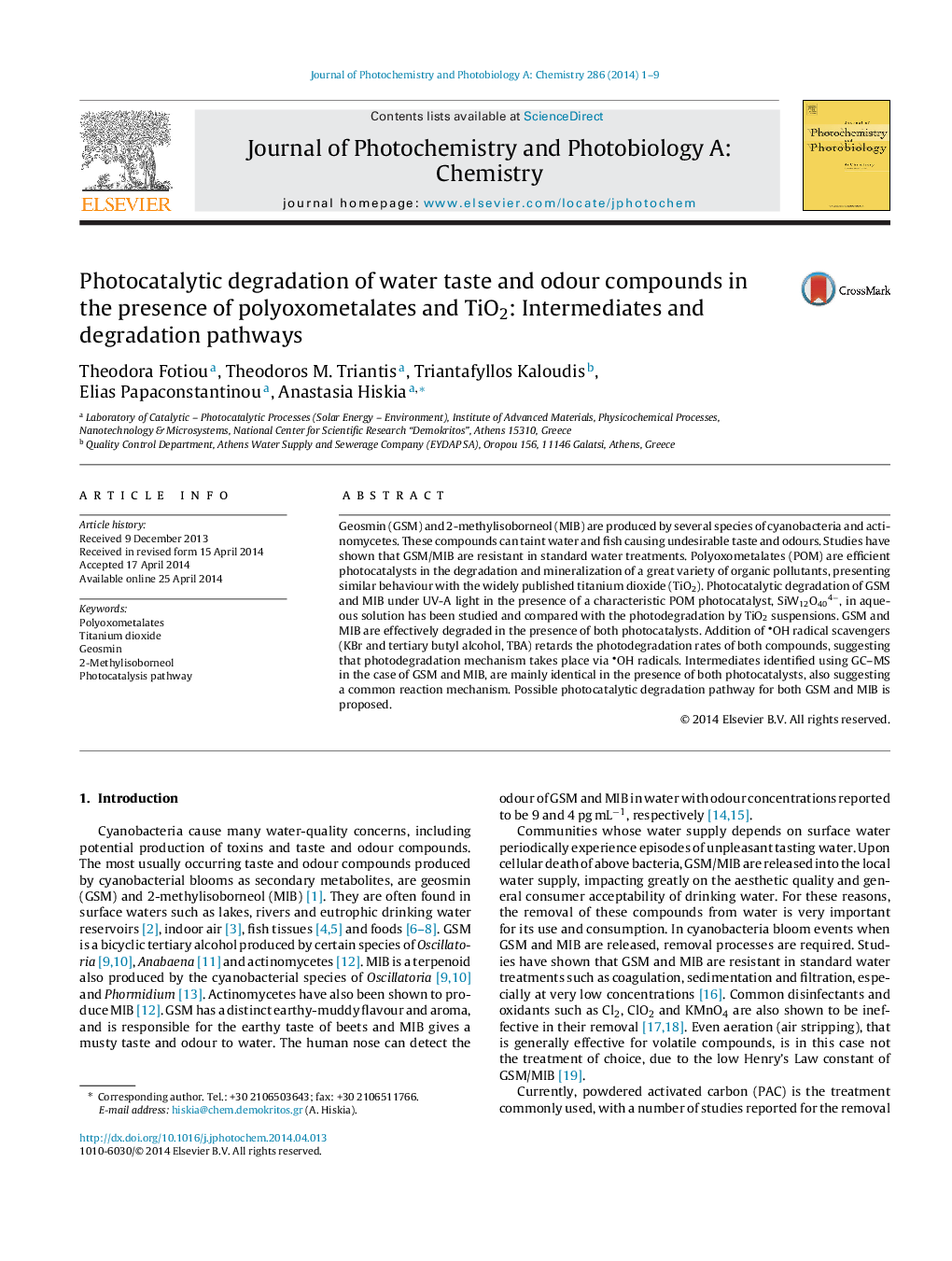| Article ID | Journal | Published Year | Pages | File Type |
|---|---|---|---|---|
| 26235 | Journal of Photochemistry and Photobiology A: Chemistry | 2014 | 9 Pages |
•Photocatalytic degradation of GSM and MIB in water, using POM and TiO2 with UV-A.•Almost complete mineralization of compounds was achieved under UV-A with POM and TiO2.•OH scavengers retard the degradation in accordance with their ability to scavenge OH radicals.•Possible photocatalytic degradation pathway for both GSM and MIB is suggested.•Identical intermediates with POM and TiO2, suggest mechanism via a common reagent (OH radicals).
Geosmin (GSM) and 2-methylisoborneol (MIB) are produced by several species of cyanobacteria and actinomycetes. These compounds can taint water and fish causing undesirable taste and odours. Studies have shown that GSM/MIB are resistant in standard water treatments. Polyoxometalates (POM) are efficient photocatalysts in the degradation and mineralization of a great variety of organic pollutants, presenting similar behaviour with the widely published titanium dioxide (TiO2). Photocatalytic degradation of GSM and MIB under UV-A light in the presence of a characteristic POM photocatalyst, SiW12O404−, in aqueous solution has been studied and compared with the photodegradation by TiO2 suspensions. GSM and MIB are effectively degraded in the presence of both photocatalysts. Addition of OH radical scavengers (KBr and tertiary butyl alcohol, TBA) retards the photodegradation rates of both compounds, suggesting that photodegradation mechanism takes place via OH radicals. Intermediates identified using GC–MS in the case of GSM and MIB, are mainly identical in the presence of both photocatalysts, also suggesting a common reaction mechanism. Possible photocatalytic degradation pathway for both GSM and MIB is proposed.
Graphical abstractFigure optionsDownload full-size imageDownload as PowerPoint slide
